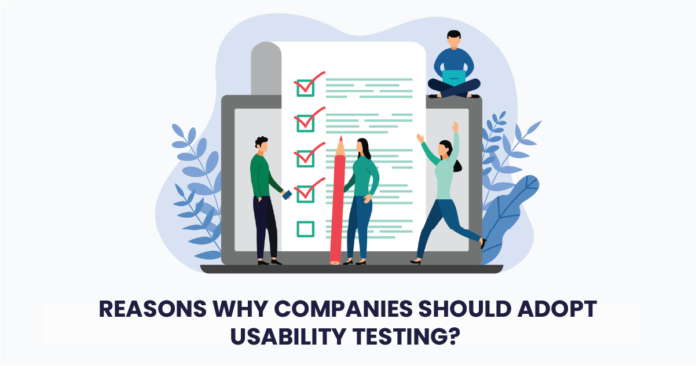Setting the Stage for Usability Testing in Corporate Realm
Companies need to be aware of the myriad of wonders of Usability Testing. It is one of the imminent steps of the product development process that could make the company’s website more captivating and user friendly, as design and user experience related issues can be identified and addressed before their customers do, by conducting tests at an early stage. As a paramount process, companies can opt for a Usability Testing Company to understand how customers will use their website or a digital product and the possible impediments they may encounter. Companies operating in a faced-paced digital environment are especially fixated on quick time to market and faster return on investments. But since user expectations are always changing there is a burgeoning need for companies to centralize the usability aspect which is inclusive of the product’s ease of usage or its efficient user interface.
Consumers today are persistently opting for digital mediums like websites or mobile apps to interact with a business’s digital products or services, which range from browsing to finalizing their purchase decisions. A company’s digital channels should be designed and updated in a way that promotes a great user experience for its customers, which is critical for any business looking to amplify its monetary gains. Usability testing serves as one of the most efficacious methods to ensure that the company’s brand’s mobile app or website lives up to the growing expectations of today’s digital consumer demands. It helps companies sustain their online presence by strategizing and keeping track of where exactly their customers are facing hurdles using their mobile app, website, or software. Even if the company has built the most technologically advanced digital product and the users are unable to navigate through it, then it might as well not entirely exist.
Weaving the Tapestry for Usability Testing’s Promising Corporate Triumph
Assuming that a company’s eCommerce website is gaining traction and there are a decent number of users visiting the site every day, they have set up analytics and extracted a number of useful metrics. The engagement and session time seem to be good; customers are adding their products to the carts, but the number of purchases is not looking that great. The analytics data reveals that a lot of users are dropping out on the payment page, and they identify that the actual problem is related to a high cart abandonment rate. As a constructive response to this, product managers may communicate with the designer and ask them to make redesign efforts like improving label visibility, increasing the text box sizes, changing the design of the CTA, and so on. And that is where the problem lies, as the issue has not been dealt with properly. Remedies may have been provided lightly, assuming that is exactly the cause, which it is probably not. On the contrary, an end number of questions related to the entire user journey could have been asked to find the root cause of the problem so that a solution could be provided for the same. Although A/B analytics and tests are instrumental in letting one know where they are going wrong, conducting usability testing is still imperative to know why it is not working.
Usability testing’s primary goal is to make sense of and comprehend how users interact with their digital product in real-time and to what extent the product has to be improved in terms of its key metrics and indicators. A usability test typically analyzes how real-time users are navigating through the entire purchase process to accomplish certain tasks or goals with the company’s digital product under favorable conditions to derive the required results. All of the stakeholders must showcase equal involvement, as each one of them may have a different viewpoint to offer pertaining to certain design decisions. And design decisions could often lead to long debates between these stakeholders due to their subjective nature. So most of the design decisions are impacted by stakeholders, and such interactivity often helps in iterating as well as validating the necessary design concepts efficiently.
Design debates require a certain degree of objectivity, as it facilitates taking fact-based design decisions more quickly. Usability-tested applications lure customers with effective UX and sustain their interest in the brand, and users continue to prefer the same brand over competitors due to its significant ease of usage and excellent UX. Usability testing serves to identify if there are any design issues in the initial stage or any other intervening issues with the user interface at the beginning. As a black box testing technique, usability testing assesses if the users are at ease while navigating through the application or the website, as this will be bound to deliver exemplary end-user retention and ensure more conversions to uplift the company’s brand identity and profitability.
Closing-in On the Usability Testing Loop in Corporate Evolution
Being aware of how users interact with your businesses interact with your digital product is more imminent than ever. We, as a Usability Testing Company can help in providing strategies to create a strong digital presence in the long run. Our UX Research Agency can assist your business in providing impeccable user experience insights, by identifying pain points and delivering a product that has exceptional user experience that helps your business stand out in today’s huge crowd of other digitally competitive businesses.


